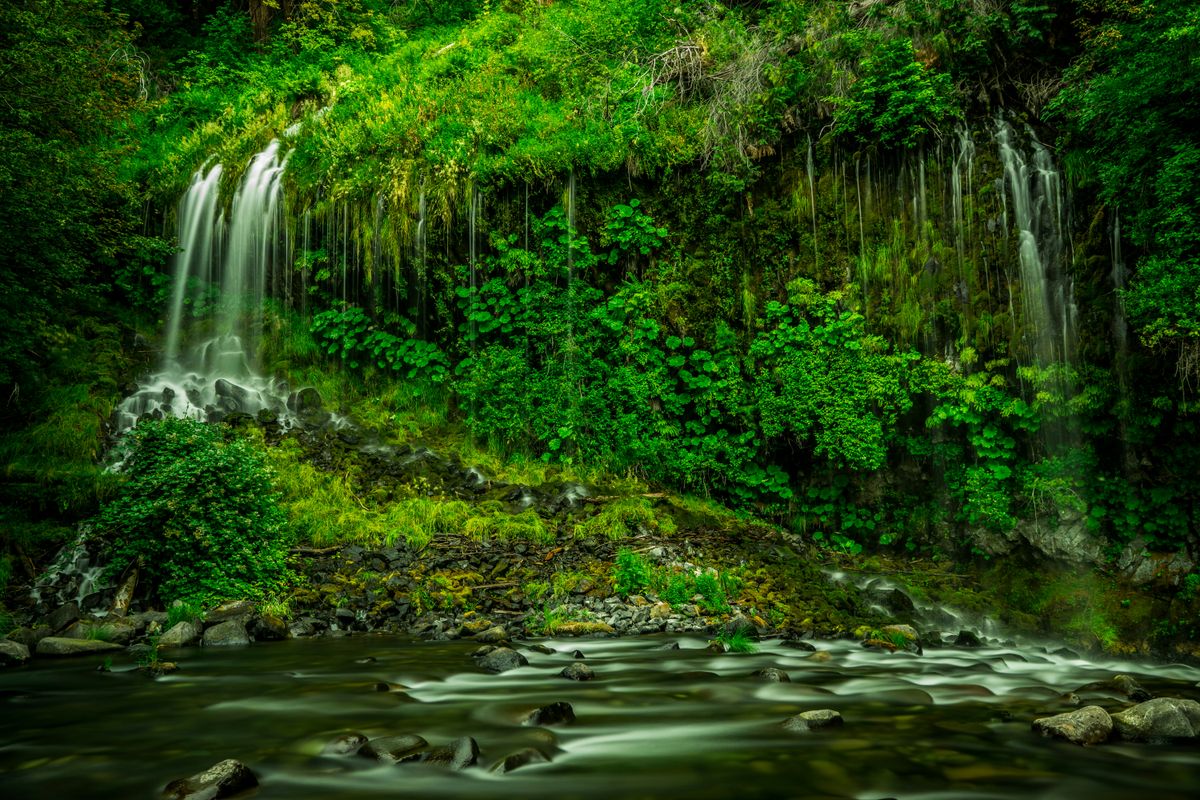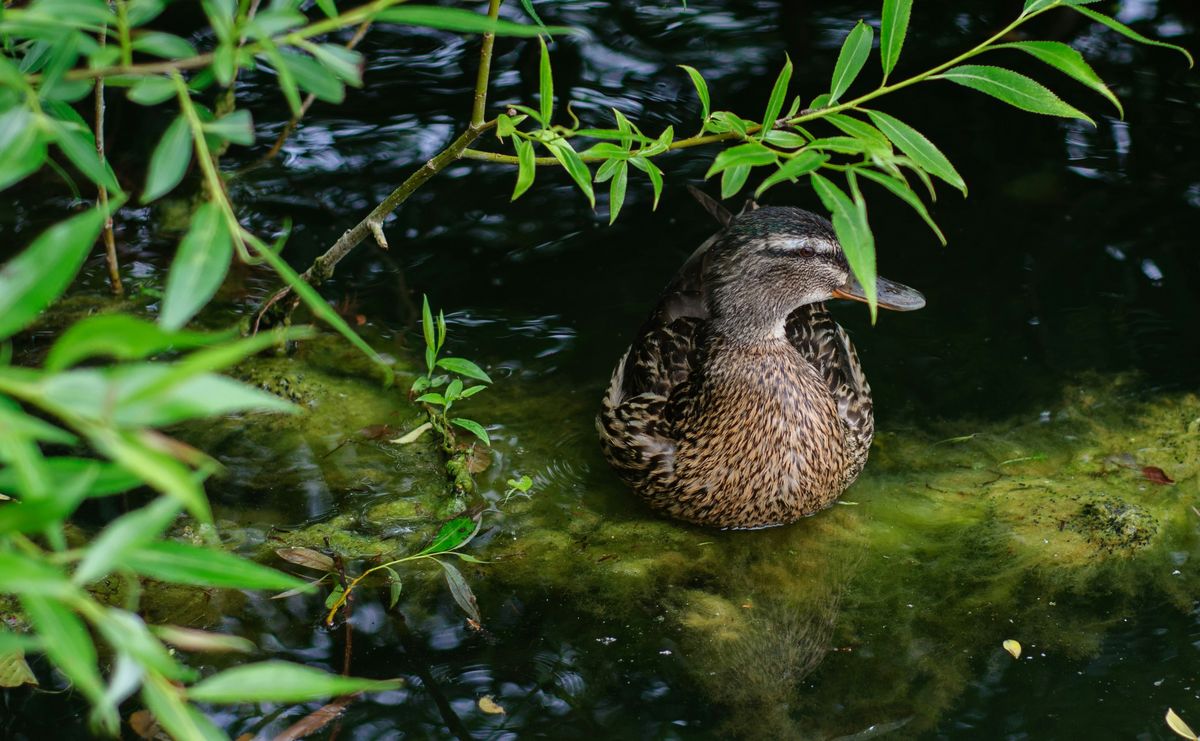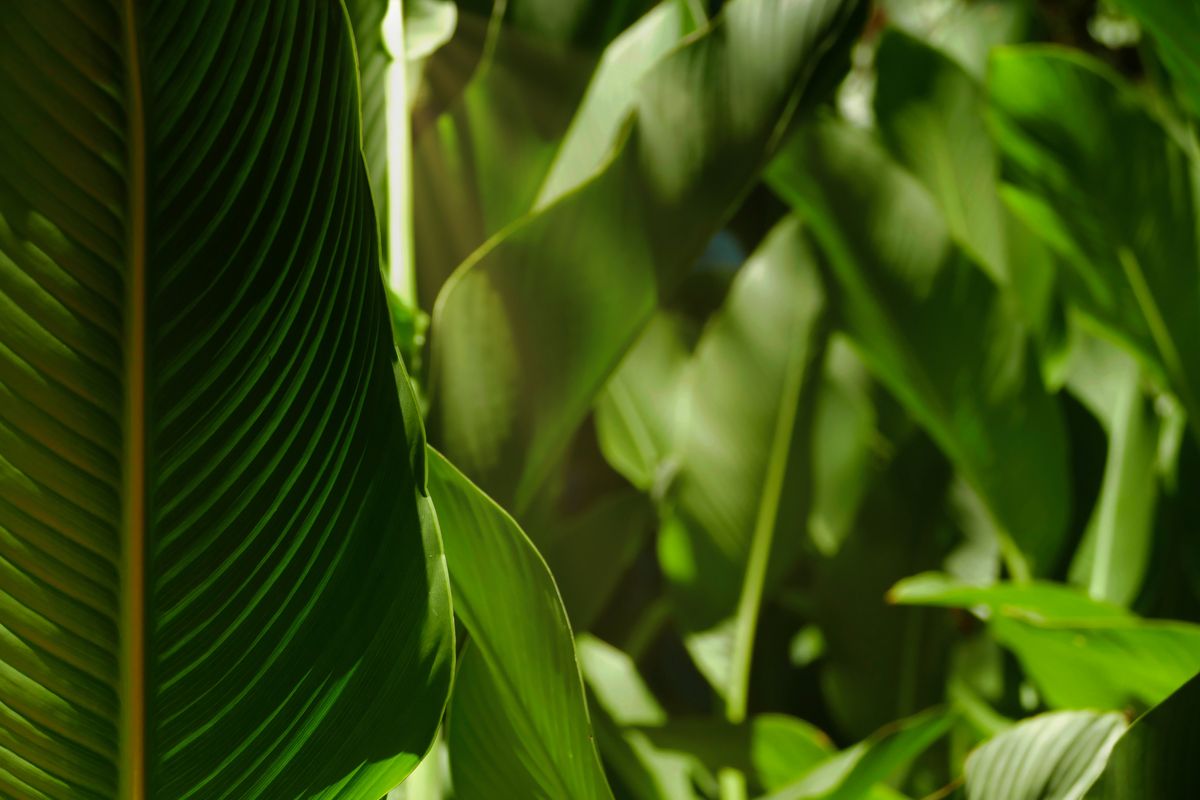Transforming your living space into a tropical oasis is easier than you think with the stunning Bird of Paradise Palm. By following these key tips and tricks, you can create a vibrant and lush atmosphere right in your own home.
Key Takeaways
- Choose a spot with bright, indirect sunlight for optimal growth.
- Maintain consistent watering to keep your Bird of Paradise Palm healthy.
- Regularly fertilize during the growing season for robust foliage.
- Prune dead or damaged leaves to encourage new growth.
- Keep an eye out for pests and address any issues promptly to prevent damage.
Choosing the Perfect Spot for Your Bird of Paradise Palm

Assessing Light Conditions
Finding the sweet spot for your Bird of Paradise Palm means paying close attention to the light conditions of your home. These tropical beauties crave bright, indirect sunlight to flourish. Direct sunlight can be a bit too intense, leading to scorched leaves, while too little light may hinder growth and the vibrancy of its foliage.
Here’s a quick checklist to ensure your palm gets just the right amount of sun:
- Place your plant near a window that receives plenty of natural light, but out of direct sunlight.
- Consider the movement of the sun throughout the day and the changing seasons.
- Use sheer curtains to diffuse intense sunlight during peak hours.
Remember, every home is unique, so you’ll need to learn your plant’s living conditions, just like you would when diving into ‘House Plants 101’. And just as Clusia shrubs adapt to their environment in South Florida, your Bird of Paradise will show its appreciation for the perfect lighting with lush, vibrant leaves.
Considering Temperature Requirements
The Bird of Paradise Palm thrives in warm conditions, so it’s crucial to get the temperature just right. These tropical beauties prefer a steady climate similar to their native South African environment. They can tolerate a range of temperatures, but it’s best to keep them in a sweet spot between 65oF (18oC) and 70oF (21oC) for optimal growth.
When temperatures start to dip, be cautious. The temperature tolerance of this plant can only go as low as 50oF (10oC). Beyond that, your Bird of Paradise will show signs of stress. To help you maintain the ideal temperature range for your plant, here’s a quick reference:
- Above 70oF (21oC): Paradise conditions! Your plant will be happiest.
- 65oF to 70oF (18oC to 21oC): Ideal growing range.
- Below 65oF (18oC): Growth may slow down.
- 50oF to 65oF (10oC to 18oC): Caution zone; watch for stress signs.
- Below 50oF (10oC): Danger zone; risk of damage.
Remember, sudden temperature changes can also be harmful, so try to avoid placing your palm near drafty windows or doors. Consistency is key to keeping your Bird of Paradise Palm healthy and vibrant.
Ensuring Adequate Space
When it comes to creating your own tropical paradise, space is a big deal—literally. The Bird of Paradise Palm, also known as Strelitzia Nicolai, is not a modest-sized plant. It’s a statement piece that demands room to flourish. Make sure you have enough space for this beauty to spread its wings.
Here’s a quick checklist to help you ensure you’ve got the space sorted:
- Check the mature size: These plants can grow quite tall, with some reaching up to 6 feet indoors. Plan for height and width.
- Room to grow: Allow for at least a few feet of space around the plant so it doesn’t feel cramped.
- Think about repotting: As it grows, you’ll need to repot your Bird of Paradise. Make sure there’s an accessible spot for a larger pot down the line.
Remember, the Bird of Paradise Palm thrives best in bright, indirect light but can tolerate up to 6 hours of direct sunlight. It’s crucial to find a balance between the right lighting and enough space. And don’t forget, regular watering and fertilization are key to keeping your tropical guest happy and healthy.
Caring for Your Bird of Paradise Palm

Watering Tips
Keeping your Bird of Paradise Palm properly hydrated is key to its health and growth. Water deeply but infrequently to mimic the natural rainfall of a tropical environment. During the warmer months, you’ll want to keep the soil consistently moist, but not soggy.
As the seasons change, you can taper off on watering. In the fall and winter, allow the soil to dry out a bit before watering again. This is a good time to observe your plant and adjust as needed. If you notice any signs of distress, it might be a cue to tweak your watering routine.
Here’s a quick guide to help you stay on track:
- Spring/Summer: Water once a week or when the top inch of soil feels dry.
- Fall/Winter: Reduce watering to every other week, or as necessary.
Remember, overwatering can be just as harmful as under-watering, so always check the soil moisture before reaching for the watering can!
Fertilizing Schedule
Feeding your Bird of Paradise Palm is like giving it a little pep talk to grow big and strong. A balanced fertilizer is your best bet, and timing is everything. During the spring and summer, when your palm is in its growing season, you’ll want to fertilize every few months. Just like us, it doesn’t need as much food in the winter, so you can ease up then.
Here’s a quick rundown of what to do:
- In spring, start with a half-strength fertilizer to wake up your plant.
- Continue with regular feedings every two months through summer.
- Once fall rolls around, reduce to a quarter-strength feeding.
- Give it a rest in winter; your palm deserves a break too!
Remember, over-fertilizing can be just as bad as not fertilizing at all. Keep an eye on your plant’s response and adjust as needed. With the right care, your Bird of Paradise will be the lush, tropical centerpiece of your home oasis.
Pruning and Maintenance
Keeping your Bird of Paradise Palm looking its best involves regular pruning and maintenance. Just like you’d maintain a showerhead with a mix of vinegar and water to prevent clogs, your palm needs similar attention to remove dead or damaged leaves and encourage new growth.
When pruning, use clean, sharp shears and follow these simple steps:
- Inspect the plant for any yellowing or damaged leaves.
- Cut the unwanted leaves at the base, near the stem.
- Remove any debris from the soil surface to prevent pests.
Remember, a well-maintained palm is like a well-kept social circle; it thrives with care and attention. So, don’t hesitate to trim away the old to make room for new, vibrant growth. And always consider the environmental impact of your maintenance routine, opting for natural, non-toxic methods whenever possible.
Enhancing the Tropical Vibe with Complementary Plants

Selecting Companion Plants
Creating a tropical oasis at home means surrounding your Bird of Paradise Palm with the right companions. Choosing plants that thrive in similar conditions will ensure a harmonious and lush environment. Consider plants like the vibrant Hibiscus or the delicate Asiatic Jasmine for ground cover that complements without competing.
For a touch of the exotic, add some Bromeliads with their striking foliage or the colorful Crotons to inject a splash of color. Don’t forget about the Golden Shrimp Plant for a unique texture or the Blue Ginger for a hint of the tropics. Here’s a quick list of plants that pair well with your palm:
- Asiatic Jasmine
- Hibiscus
- Asparagus Fern
- Golden Shrimp Plant
- Bromeliads
- Crotons
- Bird of Paradise Plant
- Blue Ginger
Remember, it’s not just about the plants you choose, but also about creating layers and textures for that full tropical effect. And if you’re lucky enough to be in Hawai’i, the iconic Plumeria with its sweet fragrance is a must-have in your garden oasis.
Creating a Lush Greenery
To truly evoke the essence of a tropical paradise, your Bird of Paradise palm should be surrounded by an array of lush greenery. Select plants with varying textures and heights to create a dynamic and layered look. Ferns, with their feathery fronds, make excellent understory plants, while taller palms or philodendrons can provide a canopy effect.
Consider the following when curating your greenery:
- Light requirements: Some plants thrive in the dappled light beneath taller foliage, while others may need more direct sunlight.
- Watering needs: Group plants with similar watering requirements together to simplify care.
- Growth habits: Be mindful of how plants spread or climb, as some may require support structures.
Creating this green oasis not only enhances the visual appeal but also contributes to a healthier environment for your Bird of Paradise. The right combination of plants can improve air quality and ensure proper fertilization and moisture levels in the soil.
Adding Colorful Blooms
To truly transport your home to a tropical world, the addition of colorful blooms is essential. These vibrant flowers not only complement the lush greenery but also add a pop of color that enlivens any space. Consider incorporating varieties that thrive in similar conditions as your Bird of Paradise Palm for a harmonious look.
Here’s a quick list of blooms that pair well with your tropical theme:
- Hibiscus: Known for their large, showy flowers.
- Bougainvillea: Offers a cascade of color with its papery blooms.
- Plumeria: Adds a sweet fragrance along with its beautiful flowers.
Remember, the key is to create a balance between functionality and style, much like transforming a kitchen into a welcoming space. Each plant should contribute to the overall aesthetic while still meeting their care requirements. With the right selection, your indoor oasis will be a vibrant testament to tropical decor, inspired by the natural elements and colors of paradise.
Troubleshooting Common Issues with Bird of Paradise Palm

Dealing with Pest Infestations
Pest infestations can be a real buzzkill in your tropical paradise. Keep an eye out for common culprits like spider mites, mealybugs, and aphids. These uninvited guests can wreak havoc on your Bird of Paradise Palm if left unchecked.
To tackle these pests, start with a gentle approach. Wipe down the leaves with a soft cloth dipped in soapy water to remove any visible bugs. For a more persistent problem, you might need to escalate your efforts:
- Isolate the affected plant to prevent the spread to your other green buddies.
- Use insecticidal soap or horticultural oil sprays, which are effective and less harmful to the plant.
- In severe cases, neem oil can be a game-changer. It’s a natural pesticide that’s safe for indoor use and can help keep those pests at bay.
Remember, prevention is better than cure. Regularly inspect your plants for early signs of infestation and take immediate action to maintain that lush, pest-free look.
Addressing Yellowing Leaves
Noticing a change in the color of your Bird of Paradise’s leaves? Yellow leaves can be a sign that your tropical buddy isn’t too happy. But don’t worry, it’s usually something you can fix with a few tweaks to your care routine.
First things first, check your watering habits. Overwatering is a common misstep that leads to yellow leaves. To correct this, water only when the top inch of soil is dry. If you’ve been heavy-handed with the watering can, it’s time to ease up and let your plant breathe.
Here’s a quick checklist to help you get back on track:
- Ensure proper drainage to prevent waterlogged roots.
- Cut back on watering during the cooler months.
- Monitor the moisture level of the soil before each watering.
Remember, consistency is key! Stick to a regular watering schedule and your Bird of Paradise should be back to its vibrant self in no time.
Managing Overcrowding
When your Bird of Paradise starts to feel a bit too cozy with its neighbors, it’s time to give it some breathing room. Overcrowding can stifle growth and lead to a less than lush appearance. But don’t worry, managing this is a breeze with a few simple steps.
Firstly, check if your plant is due for a repot. If the roots are circling the bottom or poking out of the drainage holes, it’s time for an upgrade. Choose a pot that’s a couple of inches larger in diameter to give those roots the space they crave. And while you’re at it, why not propagate a new plant? While it’s out, sever a piece of the bulb or the root with a sharp, clean knife. You can sprinkle some rooting hormone on the open cuts to encourage quicker and healthier growth.
If repotting isn’t on the cards just yet, consider pruning. Remove any dead or overcrowded stalks to promote better air circulation and light penetration. Here’s a quick checklist to keep in mind:
- Inspect the plant for signs of overcrowding
- Decide between repotting or pruning
- If repotting, choose the right size pot
- If pruning, remove only the necessary stalks
Remember, a little space can go a long way in keeping your tropical oasis vibrant and thriving. And once you’ve tackled the overcrowding, kick back with a refreshing cocktail and enjoy the stress-free beauty of your Bird of Paradise palm.
Frequently Asked Questions
How often should I water my Bird of Paradise Palm?
Water your Bird of Paradise Palm when the top inch of soil feels dry, typically once a week. Adjust based on environmental conditions.
What type of light does the Bird of Paradise Palm need?
Bird of Paradise Palms prefer bright, indirect light. Avoid direct sunlight, as it can scorch the leaves.
How can I prevent yellowing leaves on my Bird of Paradise Palm?
Yellowing leaves can be a sign of overwatering or insufficient light. Ensure proper drainage and adequate light conditions.
Do Bird of Paradise Palms require frequent fertilization?
Fertilize your Bird of Paradise Palm every 2-3 months during the growing season with a balanced fertilizer. Avoid over-fertilization.
What are common pests that affect Bird of Paradise Palms?
Common pests include spider mites, scale insects, and mealybugs. Regularly inspect your plant for signs of infestation.
How can I create a lush greenery around my Bird of Paradise Palm?
Choose companion plants that thrive in similar conditions, such as ferns, philodendrons, and peace lilies. Group plants with similar care requirements together.
